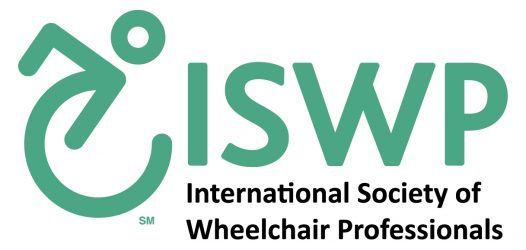The ISWP Wheelchair Service Provision Basic Test Prep-Course was designed for individuals who have participated in a wheelchair service provision basic training course or offered by the World Health Organization (WHO) or other comparable trainings. This course is not a stand-alone training course, but a highlight of relevant information and should be used solely as a guided review of resources while preparing to sit for the Wheelchair Service Provision Basic Test offered by ISWP (ISWP Basic Test).
Most of the resources presented in the course will be familiar to course participants. The purpose of reviewing the content is to ignite rich discussion among basic level service providers from around the world to better understand concepts relevant to basic level seating globally. To ensure a positive experience, course participants should reflect on the content learned and their professional experiences to interact with one another and content experts using the online discussion board.
Course Materials
Course Content
Fundamentals of Wheelchair Service Provision
-
Learning How to Use My Wheelchair
-
A6. What an appropriate wheelchair means to me
-
A8. Review: Case Scenarios
-
A3. Activity
-
A6. Activity
-
A8. Key Point Summary
-
A1. Wheelchair Users - Learning Objectives
-
A3. Wheelchair Mobility Skills
-
A6. Meeting the wheelchair user's needs
-
A1. Wheelchair Users - Activity
-
A3. Key Points Summary
-
A6. Wheelchair Users
-
A1. Benefits of an appropriate wheelchair
-
A4. Sitting Upright
-
A6. Meeting the wheelchair user's environment
-
A1. The United Convention on the Rights of Persons with Disabilities
-
A4. Activity
-
A6. Case Scenarios
-
A1. Key Points Summary
-
A4. Case Scenarios
-
A6. Workbook - Wheelchair Users
-
A2. Wheelchair Services
-
A4. Check your answers
-
A6. Key Point Summary
-
A2. Activity
-
A4. Fixed Postures
-
A7. Cushions
-
A2. Wheelchair Service Steps
-
A4. Key Points Summary
-
A7. Activity
-
A2. What does "basic level" service mean?
-
A5. Pressure Sores
-
A7. Pressure test demonstration
-
A2. Case 1
-
A5. Activity
-
A7. Key Point Summary
-
A2. Case 2
-
A5. Stages of Pressure Sores
-
A8. Transfers
-
A2. Key Points Summary
-
A5. Pressure Sore Testimonial
-
A8. Activity
-
A5. Key Points Summary
-
A8. Transfer Demonstration
-
A3. Wheelchair Mobility
-
A6. Appropriate Wheelchair
-
A8. Case Scenarios
-
Questions: Fundamentals of Wheelchair Provision
- Learning How to Use My Wheelchair
- A6. What an appropriate wheelchair means to me
- A8. Review: Case Scenarios
- A3. Activity
- A6. Activity
- A8. Key Point Summary
- A1. Wheelchair Users - Learning Objectives
- A3. Wheelchair Mobility Skills
- A6. Meeting the wheelchair user's needs
- A1. Wheelchair Users - Activity
- A3. Key Points Summary
- A6. Wheelchair Users
- A1. Benefits of an appropriate wheelchair
- A4. Sitting Upright
- A6. Meeting the wheelchair user's environment
- A1. The United Convention on the Rights of Persons with Disabilities
- A4. Activity
- A6. Case Scenarios
- A1. Key Points Summary
- A4. Case Scenarios
- A6. Workbook - Wheelchair Users
- A2. Wheelchair Services
- A4. Check your answers
- A6. Key Point Summary
- A2. Activity
- A4. Fixed Postures
- A7. Cushions
- A2. Wheelchair Service Steps
- A4. Key Points Summary
- A7. Activity
- A2. What does "basic level" service mean?
- A5. Pressure Sores
- A7. Pressure test demonstration
- A2. Case 1
- A5. Activity
- A7. Key Point Summary
- A2. Case 2
- A5. Stages of Pressure Sores
- A8. Transfers
- A2. Key Points Summary
- A5. Pressure Sore Testimonial
- A8. Activity
- A5. Key Points Summary
- A8. Transfer Demonstration
- A3. Wheelchair Mobility
- A6. Appropriate Wheelchair
- A8. Case Scenarios
- Questions: Fundamentals of Wheelchair Provision




